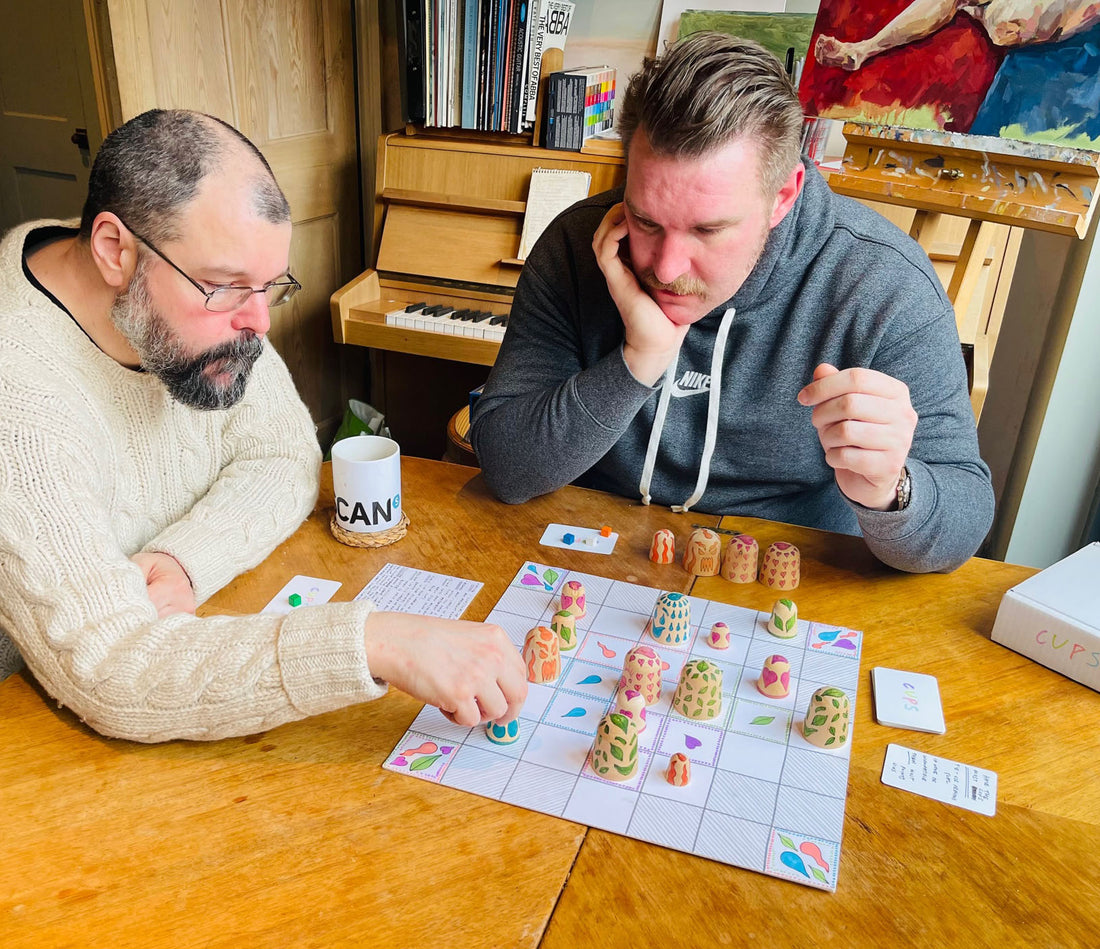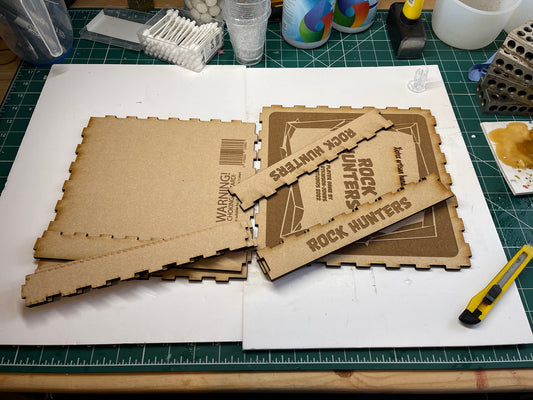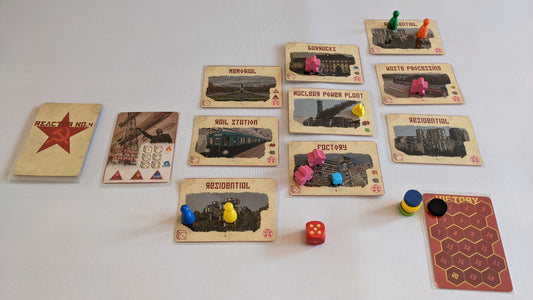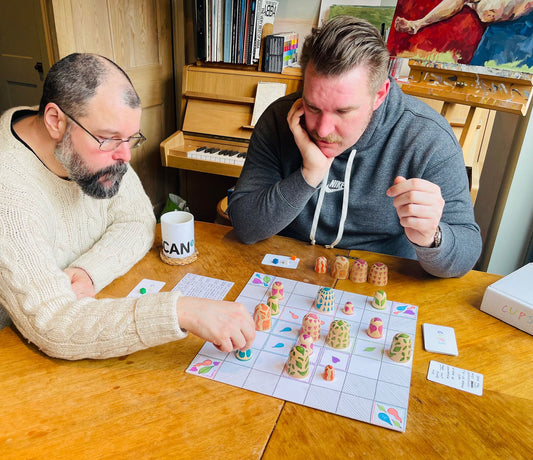Let’s start with a quick intro from you for those who might not know you
My name’s Andrew Beardsley, I’m the designer of Zombie Princess and the Enchanted Maze and I’m based in south west London. I’ve been creating games for about five years now, but that doesn’t include the terrible games I designed when I was a child back in the 80’s!

What was the first board game you remember playing?
One of the first games I remember playing was called Run Rabbit Run with my grandmother. It had a fantastic ‘Popomatic’ dice mechanism. The die was stuck in a clear plastic dome in the centre of the board and instead of rolling it, you pressed down on the dome, making it pop audibly and causing the dice to be rolled. It was so much fun!
Was there a specific game that hooked you on board games or opened your eyes wider to other games?
As a child, the game that got me hooked was the Waddingtons edition of Survive, which back then was just called Escape From Atlantis. It has the perfect mix of theme and mechanics with the disintegrating island and the panic of escaping. I also think the way the board state is continually disintegrating is fantastic. It can also be so mean with so much player interaction, which I love! I still play it today in its new edition but I miss the old 3d plastic island pieces and the spinner.
Are there particular games you like to play the most, any themes or mechanics you enjoy the most?
Board games for me are all about socialising and interaction. I love any games that get players talking and laughing. I particularly like the deception of social deduction games like Secret Hitler and Dark Moon. I also love games that allow players to create the experience themselves and encourage indirect story telling. Two of the best of these types (although very different) are Fog of Love and Oath. Both games involve shifting, hidden goals and ambiguous allegiances. They allow the payers to create worlds that are only hinted at by the game components They are both games where losing can be as fun as winning – sometimes more so!
How did you first get into designing/creating your own board games?
I designed a handful of games as a child but it wasn’t until my late 30’s that I started working on game design as an adult. I had an idea for a shifting 3D maze game where you explore and build your own maze. It was the game that I would have done anything to have as a child. It started out as just a hobby to amuse myself and grew from there. I had no intention to get it published when I started but it ended up as Zombie Princess and the Enchanted Maze.
Where do you start your ideation process when working on a new game?
Ideas for games pop into my head all the time but never when I’m thinking about game design. It is usually when I’m doing something completely unrelated, like taking a shower, going for a walk, at the gym or sitting on a train. It helps to be doing an activity that allows the brain to be in a relaxed ‘switched off’ state. This encourages day dreaming and opens up the mind to new possibilities and connections. Being busy can be the death of creativity!
Are there any points in the process that you struggle with and what do you do to get past them?
Play testing is always a challenge. First of all, you are exposing your game to criticism which is not always easy. Secondly, you need to learn to balance the feedback from play testers with your instincts as a game designer. You can be bombarded with so much information that it can be overwhelming. Games are often taken in the wrong direction, although this is vital for ruling out what is not right, or what might not work. To focus myself I will often ask the game what it wants to be. If the game does not have a clear voice at the play testing stage, then it might be one to put on the shelf. There are always plenty of others to work on!
Where do you find your inspiration for game ideas mostly comes from?
I try to design from an emotional, experiential point of view. Most of my designs come from a ‘wouldn’t it be fun if…’ point of view and then grow from there. If that core fun idea is not there from the start, then there is no framework to build the game from and it will be harder to elicit emotion from the players.
What did it feel like when you got your first game published?
As I mentioned before, Zombie Princess and the Enchanted Maze started off as a hobby to amuse myself. I thought I had something fun so entered into the Publisher Speed-Dating competition at the UK Games Expo. It was selected as one of the games, and I pitched it to ten publishers, one of whom was Zev Slasinger at Wizkids. After a play test with him the next day he said he wanted to publish it. I was obviously delighted!
Are there any projects you’re working on currently, any upcoming launches or kickstarters on the horizon?
There are so many games that I’m working on but one in particular is a co-design that I think is particularly special. I can’t say much about it at the moment other than it is a light RPG that fuses board game elements with sketching. Instead of building the world and characters with words and components, it is all sketched by the players. I’m working with a fantastic designer who shares my surreal sense of humour and game design philosophy. We are currently setting up a development and publishing company and hope to launch the game on a crowdfunding platform in the near future.
If you are a game designer, artist or work in the games industry, perhaps you could be in one of our future interviews, drop us an email.




